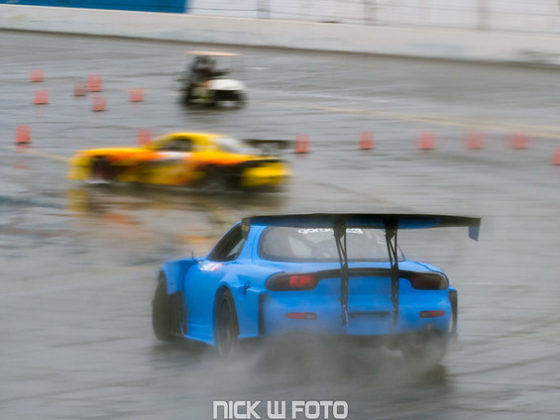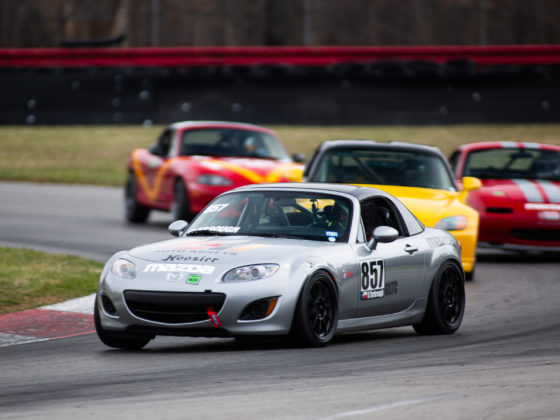
The rods also use ARP’s 2000 rod bolts which have a tensile strength of 200,000 psi. You can see that the strengthening rib is also machined into the cap. The Eagle rod uses a two-piece forging to get the grain to flow around the big end of the rod, instead of going with the length of the rod. This improves the strength of the rod as well. For improved fatigue strength, the CRS rods go through a severe shot peening process. In addition, we ordered the rods with the ESP armor finish for an even greater improvement in fatigue strength.
To reduce angularity and piston speed we ordered our rods in a 6.125″ length. This is longer than the factory rod which is 6.098″. In an LS with a 4″ stroke, this gives a stroke to rod length ratio of 1.517:1 which is pretty low. The LS with a 4″ stroke and stock rod length is in the range of a Nissan QR25 or a Honda F22 which is 1.48:1 for the Nissan and 1.49 for the Honda, neither engine, particularly the Nissan is known for good high rpm durability.
With a 6.125″ rod the stroke to rod length ratio is improved to 1.531 which is closer to a Honda B18C engine. Not only will this reduce angularity induced side loading in the engine and piston rock at TDC and importantly in the case of an LS, BDC, but it will also reduce acceleration loading on the piston, rod, and piston pin. Since the piston will spend more time at TDC and accelerate more slowly away from TDC, there is more time to fill the cylinders and more time for the power stroke to impinge on the piston improving both volumetric and thermal efficiency.
It would be even better to go with even longer rods but this would require custom parts and semi-exotic pistons and to contain costs, we were trying to do the best we could with off the shelf parts.

For pistons, we used JE’s asymmetrical FSR Ultra forgings with a 4.065″ bore and a 13.2:1 compression ratio for our motor. JE’s new Ultra Grain Flow Optimized forgings have a grain structure aligned in the direction of the pistons stress for improved strength in the order of 20%. You can see a simple demo of this in our PRI video.
The FSR is a strut type piston meaning that it has a reduced slipper skirt profile. In the past, reduced area slipper skirts meant lightweight and low friction, but lots of noise and sometimes rapid wear to the piston, rings and cylinder walls. Even with our long rods, our stroke to rod length ratio isn’t that great so we are very cognizant of piston side loading.
With the FSR pistons, we don’t have to worry too much. JE has the piston design and barrel profile down and we have found FSR pistons to run quietly without excessive skirt and bore wear. In fact, we have used FSR pistons in competition motors before with great results.

The JE FSR pistons are made from low silicon 2618 alloy. 2618 is very ductile and tough, properties which are appropriate for hard use motors. 2618 expands more with heat and needs to run a wider piston to wall clearance than higher silicon alloys which in the past meant a more noisy engine, but JE’s advanced skirt profiles have reduced the piston slap and the engines run quietly even with wider clearances.
The Ultra Series also features JE’s Perfect Skirt technology, a slippery organic coating which conforms to the bore size, in turn allowing for much tighter clearances without cold piston slap while also reducing friction. The Perfect Skirt coating also improves both the piston skirt and cylinder wall life. An important feature for this engine.

The FRS’s strut-type design also means minimal weight as there is no excess material around the piston pin, unlike fully skirted pistons. You can see some of the intricate under the ring land CNC machining here that removes all excess weight in low-stress areas identified by FEA stress analysis.




7 comments
Do you think using thermal paste (ala CPUs) would help increase heat transfer on the main bearings?
Might aid in bearing spinning. Usually, engine builders advocate a tight fit on the main saddle for best heat transfer.
it won’t one bit: It will just desolve in oil. Let alone the chunks that get stuck at the oil pickup or the bearings. It just will not work if you really want to remove heat: Graphite paper. Bit that will nog keep the bearing in place. A graphite-silicon based sealer will most likely transfer heat a little less, but will be more resillient to spinning bearings.
Then again: Bearings normally won’t spin that much, unless there are either opposing forces ( flat 4’s for instance) or when the stroke gets to large compaired to the connecting rod. It isn’t so much extra power as it is the rod stroke length.
Mike – any thoughts on using a stock 4.8 crank to reduce the stroke and increase the rod length?
For a road racing or circle track car sure. A drift car needs grunt so I don’t think I would ever destroke one. Mange rod ratio, yes but not destroke. For Dai Yoshihara’s engines, I run a big 4.250 stroke for grunt but also run a super long 6.350 rod with a tall deck block. This gives a stroke to rod length ratio of 1.494:1 which is within the realm of OEM production engines yet still packs a bunch of displacement into a small package. One of our older blocks with a big bore gives us 477 cubic inches!
Mike – What is the best roller rocker / shaft roller rocker option for a stock ls3 head?
For drifting with lower rpm, probably Crower.